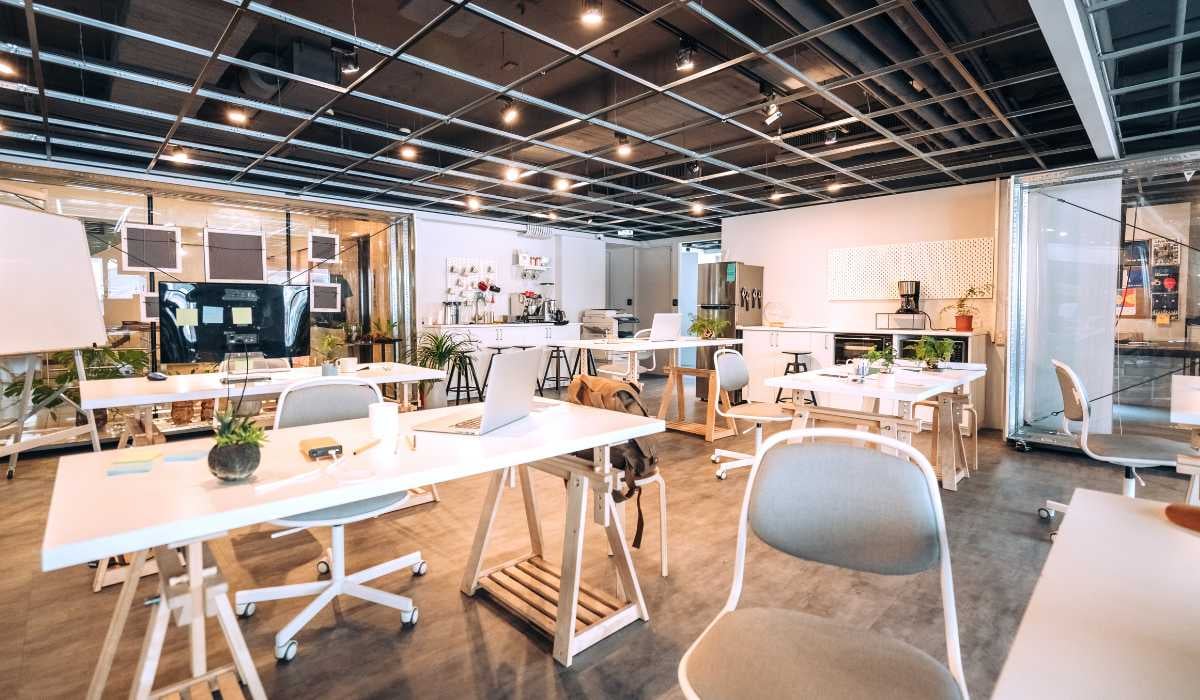In our recent Global Tenant Report, we interviewed nearly 3,000 office workers around the world. The results showed a fundamental shift in the way workers view their workplace. Below, we break down five ways the office is set to change in 2023, and how these changes will impact the way we work and collaborate in the years to come.
1. Hybrid work is the new normal
The pandemic has accelerated the trend towards remote work, and it's here to stay. However, it's important to note that remote work won't completely replace traditional office work. In 2023, we'll see a growing emphasis on hybrid work, where employees split their time between the office and remote work.
In fact, our latest Global Tenant Report revealed that 78% of respondents view hybrid work as a permanent feature of the workplace landscape.

This hybrid approach will allow companies to reap the benefits of both remote and in-person work, such as increased productivity, creativity, and collaboration. Companies that embrace this model will have a competitive advantage in attracting and retaining top talent.
2. Remote work will take a backseat to hybrid
While hybrid work is on the rise, remote work will continue to be a major trend in 2023. Certainly, WFH has slipped dramatically since its heyday:- In 2020, 91% of respondents to our Global Tenant Report told us they were completely remote
- In 2021, that number had dropped to 48.91%
- Today, only 8.45% of workers are exclusively working from home
That being said, companies will still embrace the freedom that a remote talent pool can offer.

In combination with Hybrid Work, this shift will result in a more flexible and decentralized workforce. Companies will have to invest in technology and infrastructure to support their remote workforce, including collaboration tools, secure VPNs, and cloud-based software.
3. Collaborative tech and flex space will remain essential
As remote work becomes more widespread, companies will need to find new ways to collaborate and communicate with their employees. In 2023, we'll see a growing trend towards collaborative technology, such as:
- Virtual meeting platforms
- Project management tools
- Shared workspaces
These technologies will allow companies to foster collaboration and teamwork, even when employees are working from different locations.

The other side of this coin is flex space. As companies begin to invest in more flexible collaborative and communication platforms to allow workers on and off-site to work together, they'll need to increase the flexibility of their physical space as well.
And make no mistake, the way companies are using flex space is changing. In our Global Tenant Report, respondents told us exactly how:
- 35% of companies increased their use of flex space
- 35% of companies downsized their office space
The correlation is hard to miss. Flex space offers the perfect solution for this issue, giving employers and workers the ability to shape their workplace around their shifting needs.
For office landlords, offering flex space options will ensure that today's flex-focused companies will continue to think of your building as their natural home.
4. More focus on wellness in the workplace
With remote work on the rise, it's more important than ever to prioritize employee wellness in the workplace. In 2023, we'll see a growing emphasis on employee wellness programs, such as stress management workshops, mental health resources, and ergonomic office setups.

Wellness is an unmistakeable priority for workers. In our Global Tenant Report:
- 50% of respondents reported feelings of isolation caused by WFH
- Health and fitness was cited as the second most popular motivator for attending the office
- Five of the six top motivators for attending the office related to lifestyle or community
These programs will help companies support the well-being of their employees, as well as improve productivity and overall job satisfaction.
Learn how wellness initiatives can help to spur workers to spend more time in the office.
5. Ignoring sustainability will become taboo
In 2023, sustainability will become an increasingly important consideration for companies, as they look for ways to reduce their carbon footprint and improve their environmental impact. From energy-efficient buildings to eco-friendly office supplies, companies will adopt sustainable practices to reduce their environmental impact.
Our users tell us that sustainability is a key issue for them:
- Workers rate the importance of sustainability as 8/10 or "very important"
- Only 21% say they are fully aware of what their building is doing
- 40% feel they have no way to play a part in that mission
This gap between user interest and awareness demonstrates that commercial landlords are simply not doing enough to communicate their ESG mission with their tenants and users.

With the increasing demand from everyday workers, commercial landlords that fail to communicate their ESG mission properly will soon find their tenants turning their backs for more buildings that make them feel they are an intrinsic part of the mission.
Prepare for more transformation
The modern workplace is undergoing a major transformation, as technology and the pandemic drive new trends and innovations.

Whether it's hybrid work, remote work, collaborative technology, or sustainable workplaces, these trends will shape the future of work in 2023 and beyond. Companies that stay ahead of the curve will be well positioned to succeed in the years to come.
.jpg?width=722&height=515&name=Blog%20Hero%20Image%20(1500%20%C3%97%20800%20px).jpg)



